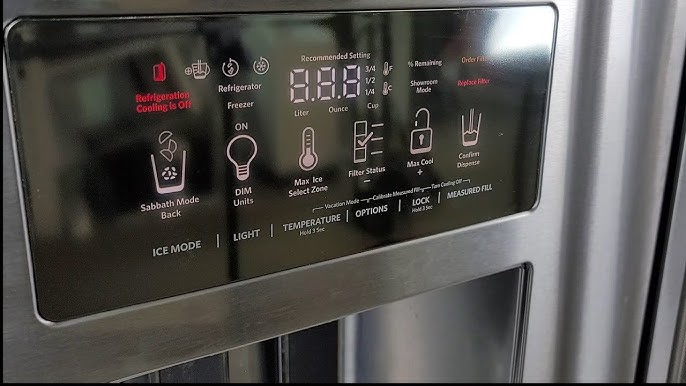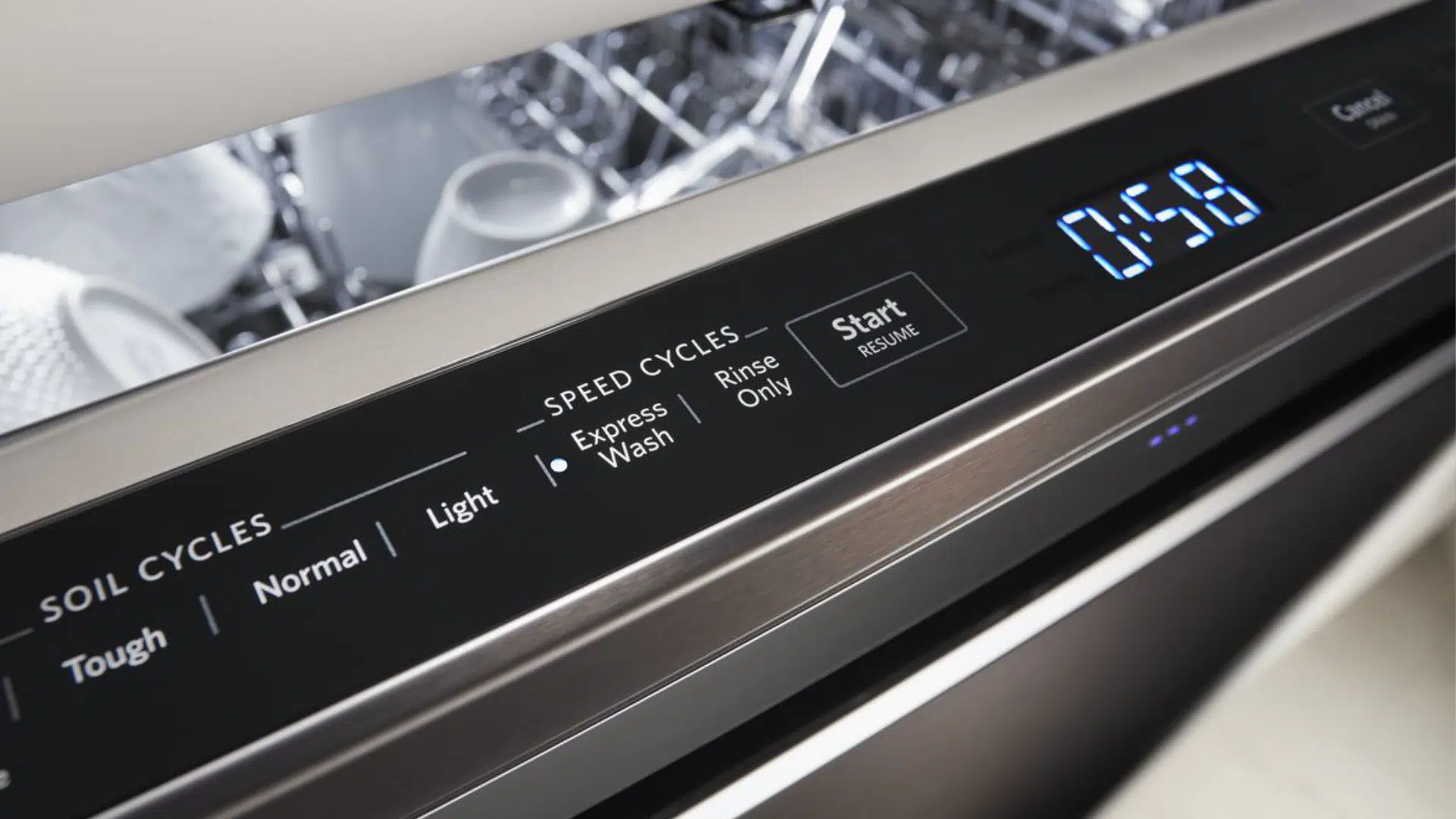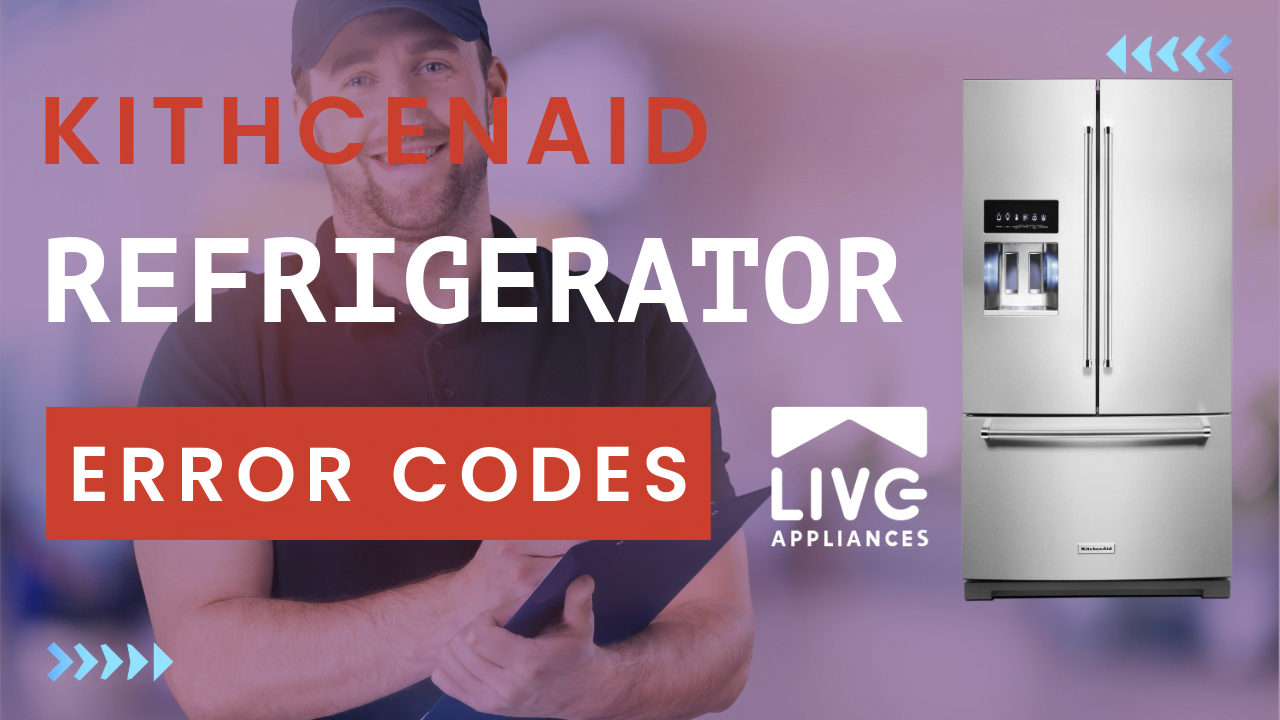Your Kitchenaid fridge is more than just an appliance; it’s a vital part of your kitchen. When it works smoothly, life feels easier.
But what happens when an error code suddenly appears on the display? Panic might be your first reaction. However, understanding what these codes mean can save you from unnecessary stress and costly repairs. You might even fix the issue yourself! You’ll discover what those mysterious error codes really mean, and how you can tackle them head-on.
Keep reading to turn potential fridge failures into simple, manageable fixes. Your peace of mind is just a few paragraphs away.
Common Error Codes
Kitchenaid fridge error codes help identify issues quickly. Each code signals a specific problem, like temperature faults or sensor failures. Understanding these codes aids in fast troubleshooting and efficient repairs.
If you’ve ever owned a KitchenAid fridge, you’re probably familiar with the array of error codes that can pop up unexpectedly. These codes are the appliance’s way of communicating that something isn’t quite right. Knowing what they mean can save you time and stress. Let’s dive into some of the most common error codes you might encounter and what they indicate about your fridge’s health.E1 Code
The E1 error code is a common sight for many KitchenAid fridge owners. This code typically suggests that the temperature sensor is malfunctioning. It might seem like a minor issue, but ignoring it could lead to bigger problems. Have you ever noticed your fridge not cooling as efficiently? That could be the E1 code trying to tell you something. In this case, it’s best to check the sensor connections or consider replacing the sensor altogether.E2 Code
Seeing an E2 code can be unsettling if you don’t know what it means. This error relates to the freezer compartment’s defrost sensor. If you spot this code, your freezer might not be defrosting as it should. A reader once shared how ignoring the E2 code led to a build-up of frost, causing the freezer door to stick. To avoid this, ensure the defrost system is working properly or consult a professional.E3 Code
The E3 error code is not one you want to see. It signals a problem with the fridge’s evaporator fan. Without this fan, your fridge can’t circulate cold air effectively, leading to uneven temperatures. Imagine opening your fridge to find some items frozen and others warm. That’s the E3 code in action. Addressing this promptly by checking the fan for obstructions or faults can save your groceries and your nerves. Understanding these common error codes not only helps maintain your KitchenAid fridge but also ensures it operates efficiently. Have you encountered any of these codes before? If so, what steps did you take to resolve the issue? Share your thoughts in the comments below!
Credit: www.youtube.com
Identifying Error Causes
When your KitchenAid fridge starts displaying error codes, it can be frustrating. Understanding the root causes of these errors is crucial for resolving them efficiently. Pinpointing the exact issue allows you to take specific actions to fix it, saving you time and preventing further complications. So, what might be causing these error codes? Let’s explore some common culprits.
Power Issues
One of the first things to check is the power supply. Is your fridge properly plugged in? Sometimes, a loose plug or a tripped circuit breaker can cause error codes to appear. Ensure that the outlet is functioning by testing it with another appliance.
Consider also the possibility of voltage fluctuations. These can affect the fridge’s performance, leading to error codes. You might want to invest in a surge protector to safeguard your appliance.
Sensor Failures
Sensors play a crucial role in maintaining your fridge’s functionality. If a sensor fails, it can trigger an error code. Check if the door sensor is working correctly. A malfunctioning sensor might not detect if the door is open or closed, impacting the fridge’s operation.
Temperature sensors are equally important. If your fridge isn’t cooling properly, a faulty temperature sensor could be the issue. Regularly inspect these sensors for any signs of damage or disconnection.
Cooling Problems
Cooling issues are often at the heart of many fridge error codes. Is your fridge not cold enough? This could be due to clogged air vents. Make sure they are clear of food particles and debris to allow proper airflow.
Another common problem is a malfunctioning compressor. If the fridge isn’t cooling, the compressor might need attention. Listen for unusual noises, which can indicate compressor troubles.
Have you ever ignored a minor error code thinking it would resolve itself? How did that turn out? Paying attention to error causes not only saves you from bigger headaches but also extends the life of your fridge. What’s your approach when faced with appliance errors?
Basic Troubleshooting Steps
If you’ve ever faced a sudden error code on your Kitchenaid fridge, you’re not alone. These codes can be confusing, but with some basic troubleshooting steps, you can often resolve the issue yourself. Think of it like a puzzle — once you know where to look, things start falling into place. Let’s dive into some practical solutions that can help you get your fridge back to its optimal state.
Resetting The Fridge
Sometimes, a simple reset can clear minor glitches. To reset your Kitchenaid fridge, unplug it from the wall. Wait for about five minutes before plugging it back in. This can help refresh the system and potentially clear the error code.
Have you ever unplugged a device and it just worked perfectly after? Fridges can behave similarly. If the error persists, it might be time to move to the next step.
Checking The Power Supply
Ensure your fridge is receiving adequate power. Inspect the power cord for any visible damage. A loose connection or a tripped circuit breaker can also be culprits behind error codes.
Imagine trying to use a phone with a drained battery — frustrating, right? Your fridge needs consistent power to function correctly. If everything looks good but the error remains, don’t lose hope; there’s more to explore.
Inspecting The Sensors
Sensors in your fridge play a crucial role in maintaining temperature and functionality. Check if any sensors are blocked or dirty. Gently cleaning them can sometimes help restore their function.
Think about how a dirty lens affects a camera’s ability to capture clear photos. Similarly, clean sensors ensure your fridge operates smoothly. If cleaning doesn’t help, consider reaching out for professional advice.
What’s your experience with handling appliance glitches? Sometimes, tackling these issues yourself can give you a sense of accomplishment. Remember, understanding the basics can save you time and possibly some repair costs.

Credit: viaappliance.com
Advanced Troubleshooting Techniques
Experiencing a Kitchenaid fridge error code can be frustrating. Start by checking the user manual for guidance. Ensure proper power supply and clear any obstructions. If the problem persists, consult a professional technician for a detailed diagnosis.
When your KitchenAid fridge displays an error code, it can feel daunting. But diving into advanced troubleshooting techniques can be empowering. These strategies help you address the problem head-on, ensuring your fridge runs smoothly again. Get ready to roll up your sleeves and tackle those pesky error codes with confidence.Diagnosing Electrical Failures
Electrical failures can cause your fridge to malfunction. Start by checking the power supply. Ensure the fridge is plugged in properly and the outlet is functioning. Next, inspect the circuit breaker. A tripped breaker can lead to a non-functional fridge. Resetting the breaker might just solve your problem. Finally, look at the power cord for visible damage. If it’s frayed or broken, it might be time for a replacement. Taking these steps can save you both time and money.Testing The Cooling System
A faulty cooling system can trigger error codes. Begin by checking the thermostat settings. Make sure they’re set to the desired temperature. Inspect the condenser coils. Dust and debris can hinder their performance. Cleaning them with a vacuum or brush can improve cooling efficiency. Listen for any unusual noises from the compressor. Strange sounds might indicate a need for professional repair. Regular maintenance can prevent these issues from escalating.Examining The Control Board
The control board is the brain of your fridge. If it’s malfunctioning, error codes can pop up. Start by visually inspecting the board for any signs of damage or burnt components. If everything looks fine, consider resetting the control board. Unplug the fridge for a few minutes, then plug it back in. This simple step can sometimes clear minor glitches. If problems persist, you might need to replace the control board. While this can be a more involved process, it’s often a necessary step for long-term functionality. Have you ever wondered how often we overlook simple fixes? By understanding these techniques, you can tackle error codes with confidence and keep your KitchenAid fridge in top shape.When To Call A Professional
Experiencing a Kitchenaid fridge error code? It’s wise to contact a professional for help. Experts can quickly diagnose and fix the issue. Keeping your fridge in top condition prevents further problems.
Encountering error codes on your Kitchenaid fridge can be frustrating. Sometimes, a simple reset fixes the issue. But other times, professional help is necessary. Knowing when to call a technician saves time and stress.Persistent Error Codes
If error codes keep appearing, it might signal deeper issues. Temporary fixes may not solve the root problem. Repeated codes often require expert diagnosis. Professionals have the tools and knowledge for persistent errors. They can ensure your fridge operates smoothly.Complex Repairs
Some repairs are complex and need special skills. Attempting these repairs without expertise could worsen the problem. Electrical issues, for instance, need a professional touch. Hiring an expert ensures safe and effective repairs. It also reduces the risk of further damage.Warranty Considerations
Your fridge may still be under warranty. Unauthorized repairs can void this warranty. Professionals are often authorized service providers. They help maintain your warranty while fixing the problem. Always check warranty terms before attempting any DIY repairs. `Preventive Maintenance Tips
Maintaining your KitchenAid fridge can extend its lifespan. Regular care reduces error codes and other issues. Simple steps can prevent costly repairs and ensure efficient operation.
Regular Cleaning
Clean the fridge interior monthly. Use mild soap and water. Remove all food and shelves before cleaning. This prevents mold and odors. Clean coils twice a year. Use a vacuum or a soft brush. Dusty coils reduce efficiency and increase energy use.
Scheduled Inspections
Inspect the door seals regularly. A loose seal lets cold air escape. This causes the fridge to work harder. Check for cracks or gaps. Replace seals if needed. Schedule professional inspections annually. A technician can spot hidden issues early. This keeps your fridge running smoothly.
Proper Usage Guidelines
Do not overload your fridge. Overloading blocks air vents. This affects cooling efficiency. Store food properly. Leave space between items for air circulation. Keep the fridge at the recommended temperature. This is usually between 37°F and 40°F.

Credit: liveappliancesservice.com
Frequently Asked Questions
What Does Kitchenaid Fridge Error Code Mean?
The error code indicates a problem with the fridge. It helps identify issues like temperature or component failure.
How Do I Reset A Kitchenaid Fridge Error Code?
Unplug the fridge for 5 minutes. Plug it back in. This often resets the error code.
Why Is My Kitchenaid Fridge Showing Error Codes Frequently?
Frequent error codes may mean faulty sensors or components. Regular maintenance can help prevent these issues.
Can I Fix Kitchenaid Fridge Error Codes Myself?
Yes, some errors are simple. Check manual for solutions. If unsure, contact customer support for guidance.
Is Professional Help Needed For Kitchenaid Fridge Errors?
If DIY fixes don’t work, seek expert help. Technicians can diagnose and fix complex fridge issues efficiently.
Conclusion
Understanding Kitchenaid fridge error codes can simplify troubleshooting. These codes guide you to solve issues fast. No more guessing what’s wrong. Check the manual for detailed instructions. Remember, regular maintenance prevents many errors. Keep your fridge clean and well-organized. This helps it run smoothly.
If problems persist, contacting a professional is wise. They offer expert solutions. With these tips, you can ensure your fridge works efficiently. Happy cooling and enjoy the fresh food. A well-maintained fridge is essential for every kitchen. It saves time and reduces stress.
Keep it in top condition.
